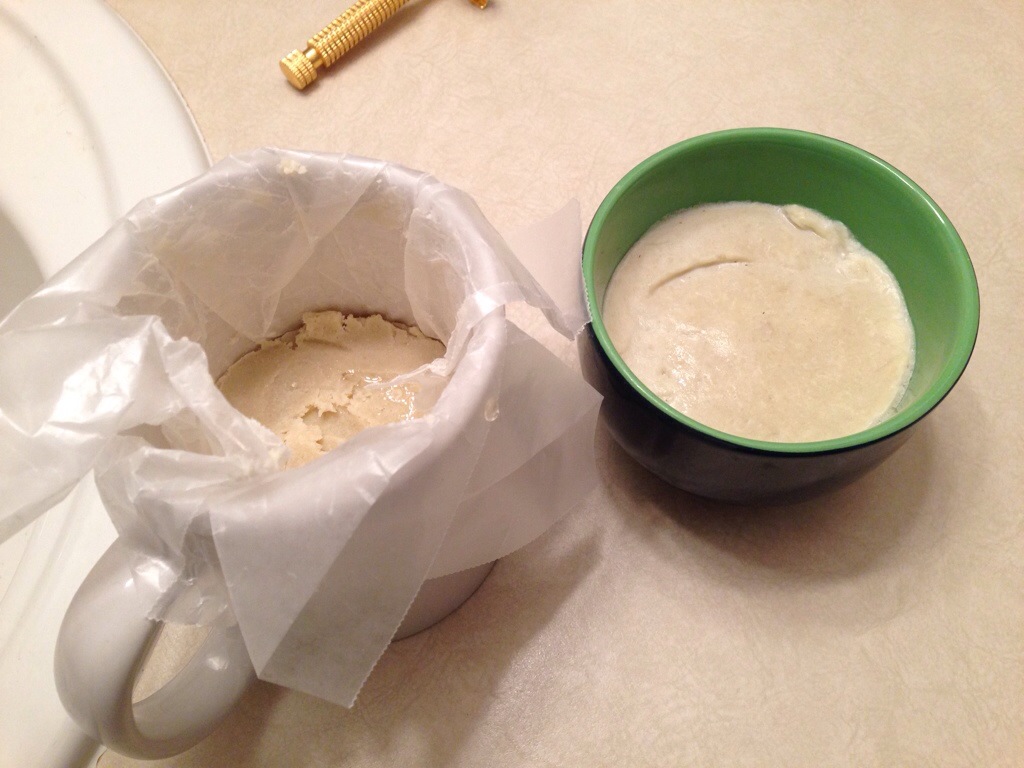I suppose the title is in reverse order. Let me explain.
I recently bought a safety razor at an antique store, along with a pack of double-edged razor blades, and started shaving with it. This is the razor your grandpa shaved with. To go along with it, I had to buy a shaving kit: a mug and brush for lathering up.

I noticed an immediate difference compared to my old cartridge razor: less irritation, a smoother shave, and I’m pretty sure my stubble after a few days was more even too. It’s more of a ritual, too: you can’t just mash the razor against your face, but gently and carefully let it rest against your skin as you guide it (I’m still getting the hang of it). And the goal is accomplished with multiple lathers, multiple passes. It’s rather relaxing.
Naturally, I had to make my own shaving cream to use with my newfangled razor, so I looked up several recipes and settled on one that seemed pretty basic: coconut oil, olive oil, and shea butter. Unfortunately, it hardly lathered up at all, and was very greasy, making my shaving equipment a bit hard to clean. The problem was thus: it was not soap.

So I spent some time researching soap-making and decided to make a second attempt at shaving soap (well, really a first attempt, since the cream I made wasn’t soap). The only really necessary addition to my recipe to turn it into soap is lye, which saponifies the oils.
I found a different recipe and proceeded to make hot process soap, which is a surprisingly easy process: add a lye solution to the oils, heat and stir until it all binds together, pour in a mold and cure (that’s the simplified version).
After letting it cure, I’ve found it makes a decent lather and a nice shave. It’s not perfect, but it was cheap and easy to do, so I have the flexibility to experiment and perfect my shave soap.

Of course, since I must make absolutely everything myself, it’s only logical that I should make my own lye next. Lye, while caustic and dangerous, is fortunately easy to make: all you need is ashes from hardwoods and rain water. The water filters down through the ashes in a container, leaching out the lye from the ashes and dripping out through holes in the bottom into a second container. Ta-da! You have a lye solution. They say you can tell it’s the right concentration for soap-making when an egg floats just right in it. Unfortunately I have yet to try lye-making, but I will most definitely report back when I do.
In the meantime, catch me clean-shaven over the summer months using my manly safety razor and homemade soap.